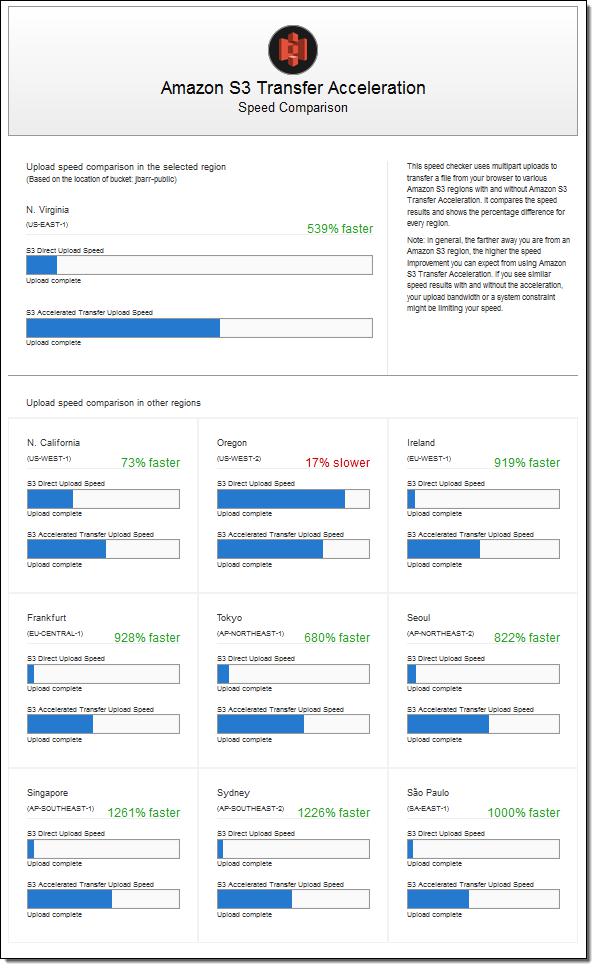- All Exams Instant Download
Which of the following options can satisfy the given requirement?
A company collects atmospheric data such as temperature, air pressure, and humidity from different countries. Each site location is equipped with various weather instruments and a high-speed Internet connection. The average collected data in each location is around 500 GB and will be analyzed by a weather forecasting application hosted in Northern Virginia. As the Solutions Architect, you need to aggregate all the data in the fastest way.
Which of the following options can satisfy the given requirement?
A . Use AWS Snowball Edge to transfer large amounts of data.
B . Upload the data to the closest S3 bucket. Set up a cross-region replication and copy the objects to the destination bucket.
C . Enable Transfer Acceleration in the destination bucket and upload the collected data using Multipart Upload.
D . Set up a Site-to-Site VPN connection.
Answer: C
Explanation:
Amazon S3 is object storage built to store and retrieve any amount of data from anywhere on the Internet. It’s a simple storage service that offers industry-leading durability, availability, performance, security, and virtually unlimited scalability at very low costs. Amazon S3 is also designed to be highly flexible. Store any type and amount of data that you want; read the same piece of data a million times or only for emergency disaster recovery; build a simple FTP application or a sophisticated web application.

Since the weather forecasting application is located in N.Virginia, you need to transfer all the data in the same AWS Region. With Amazon S3 Transfer Acceleration, you can speed up content transfers to and from Amazon S3 by as much as 50-500% for long-distance transfer of larger objects. Multipart upload allows you to upload a single object as a set of parts. After all the parts of your object are uploaded, Amazon S3 then presents the data as a single object. This approach is the fastest way to aggregate all the data.
Hence, the correct answer is: Enable Transfer Acceleration in the destination bucket and upload the collected data using Multipart Upload.
The option that says: Upload the data to the closest S3 bucket. Set up a cross-region replication and copy the objects to the destination bucket is incorrect because replicating the objects to the destination bucket takes about 15 minutes. Take note that the requirement in the scenario is to aggregate the data in the fastest way.
The option that says: Use AWS Snowball Edge to transfer large amounts of data is incorrect because the end-to-end time to transfer up to 80 TB of data into AWS Snowball Edge is approximately one week. The option that says: Set up a Site-to-Site VPN connection is incorrect because setting up a VPN connection is not needed in this scenario. Site-to-Site VPN is just used for establishing secure connections between an on-premises network and Amazon VPC. Also, this approach is not the fastest way to transfer your data. You must use Amazon S3 Transfer Acceleration. References:
https://docs.aws.amazon.com/AmazonS3/latest/dev/replication.html https://docs.aws.amazon.com/AmazonS3/latest/dev/transfer-acceleration.html Check out this Amazon S3 Cheat Sheet: https://tutorialsdojo.com/amazon-s3/
Latest SAA-C03 Dumps Valid Version with 400 Q&As
Latest And Valid Q&A | Instant Download | Once Fail, Full Refund
Subscribe
Login
0 Comments
Inline Feedbacks
View all comments

